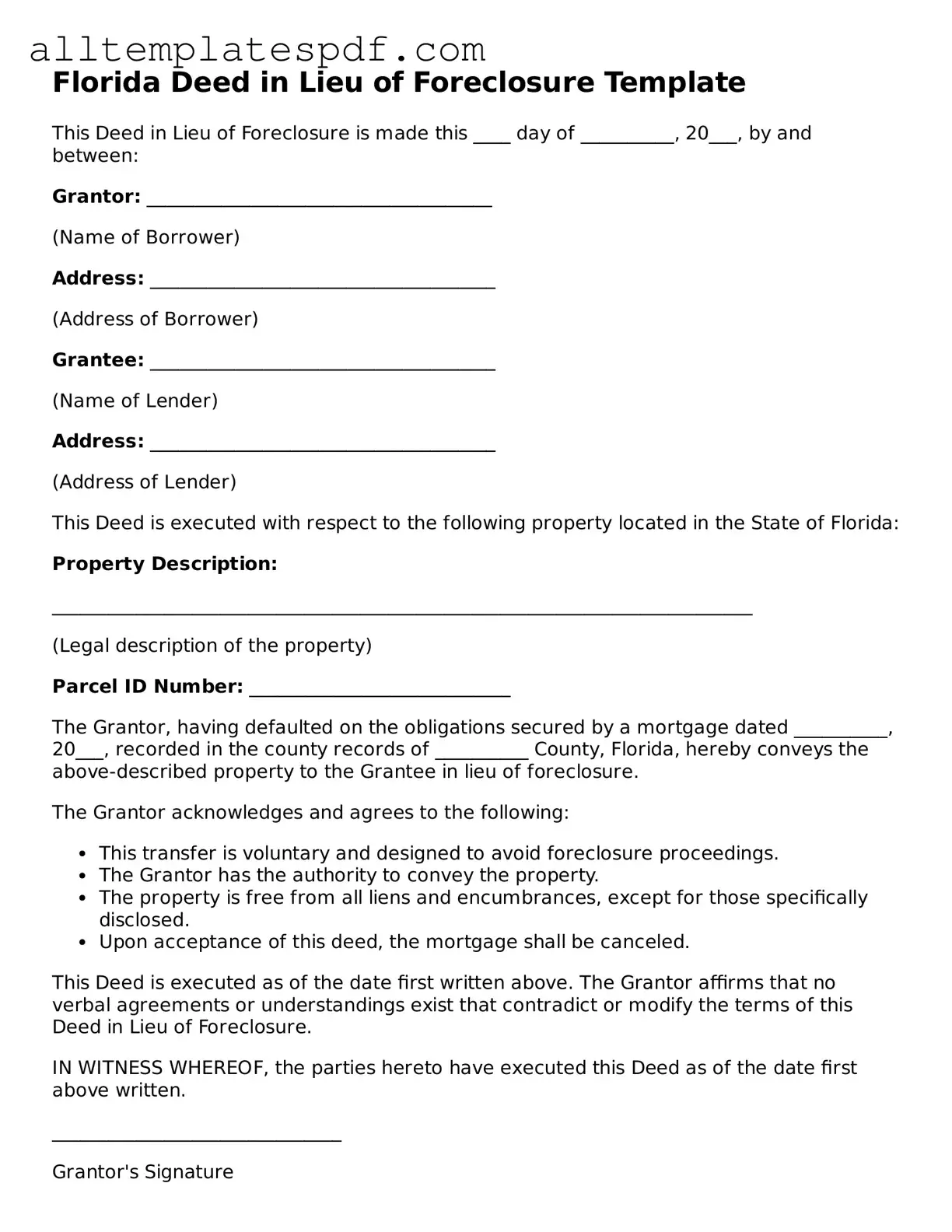Filling out the Florida Deed in Lieu of Foreclosure form can be a complex process, and many individuals make mistakes that can complicate their situation. One common error is failing to provide accurate property information. This includes not listing the correct legal description or the property address. Inaccurate details can lead to delays and complications in the processing of the deed.
Another mistake often made is neglecting to include all necessary signatures. All parties involved must sign the document for it to be valid. Missing a signature can render the deed ineffective, causing further issues down the line. It's crucial to ensure that everyone who has an interest in the property is included and has signed.
Additionally, people sometimes forget to have the deed notarized. A notarized deed is essential for it to be recognized legally. Without notarization, the document may not hold up in court or be accepted by the lender. This step should not be overlooked.
Some individuals also fail to provide a clear statement of intent. The deed should explicitly state that it is being executed in lieu of foreclosure. Ambiguities in language can lead to misunderstandings and potential legal challenges. Clear communication is vital.
Another frequent oversight is not understanding the implications of the deed. Some individuals may not fully grasp how a deed in lieu of foreclosure affects their credit or future homeownership options. It’s important to consider the long-term consequences before proceeding.
Moreover, people often neglect to consult with a legal professional or financial advisor. This can be a costly mistake. Professional guidance can help navigate the complexities of the process and ensure that all necessary steps are taken correctly.
Finally, many individuals do not keep copies of the completed deed. Once the form is filled out and submitted, it is essential to retain a copy for personal records. This can be important for future reference or in case of disputes. Keeping thorough documentation is always a wise practice.
